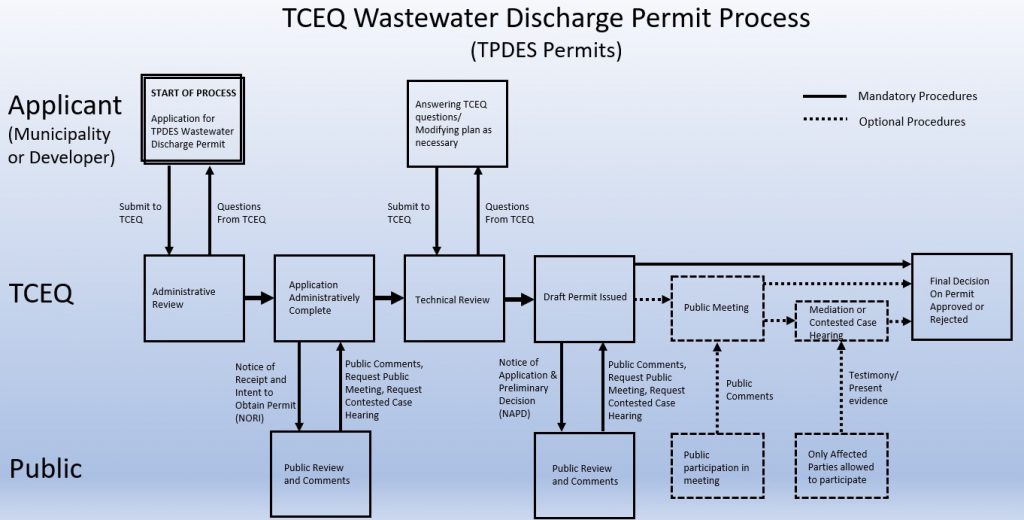Land Application and Beneficial Reuse
Two alternatives to direct discharge are available with the state permitting agency (TCEQ): land application and beneficial reuse (see below graphic). Land application simply means using wastewater effluent in a dedicated irrigation field and allowing soil and plants to further treat the effluent. Subsurface irrigation of the field is best. Soil systems can often provide superior and much more cost-effective treatment for many domestic wastewater pollutants, including pharmaceuticals and personal care products.1
Beneficial reuse occurs when treated effluent is used to replace potable water use. Most commonly this is done on landscaping such as medians, parks, and ball-fields. With good pre-planning, water could also be used inside buildings, for example to flush toilets.
Decentralized Technologies and Small Scale Solutions
Aggregating large quantities of wastewater has its problems regardless of what is done with the effluent. Aggregation means that failures such as pipes breaking and pump station failures lead to larger spills. It also takes more energy to pump wastewater further. There are excellent community-scale wastewater technologies that are available. Wastewater can be dealt with closer to the source!
The image below shows non-obtrusive contained wastewater treatment for a community of several dozen homes. There are similar systems that can be used for larger communities. These smaller facilities can be hidden by landscaping. When paired with beneficial reuse, these systems provide a great service for communities without polluting our pristine hill country creeks.
Get Involved In The Permit Process!
Have you received notice that a wastewater treatment plant near you wants to start dumping treated sewage into a nearby creek or river? Or maybe you’ve heard about it from one of your neighbors? Get involved in the process by submitting your comments to TCEQ, requesting a public meeting or contested case hearing, and even contacting your local elected officials. The flow chart below shows the wastewater permitting process in detail (click graphic for higher-res version), with some helpful links below the graphic.
Submit A Comment To TCEQ On A Proposed Permit
Read TCEQ’s Explanation Of The Permitting Process
Search TCEQ’s Database For Information On A Proposed Or Existing Or Permited
Contact Your Local Representative


